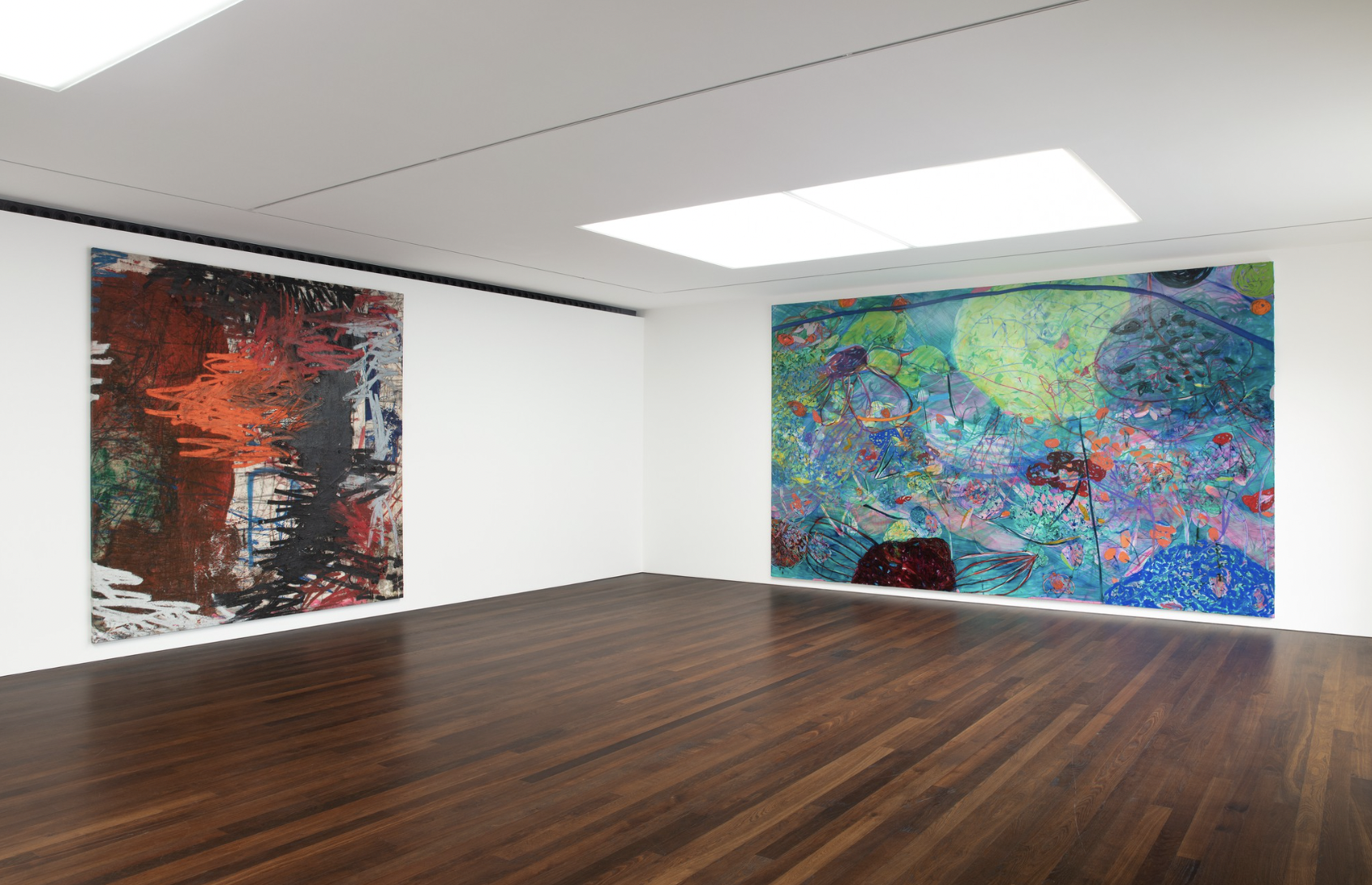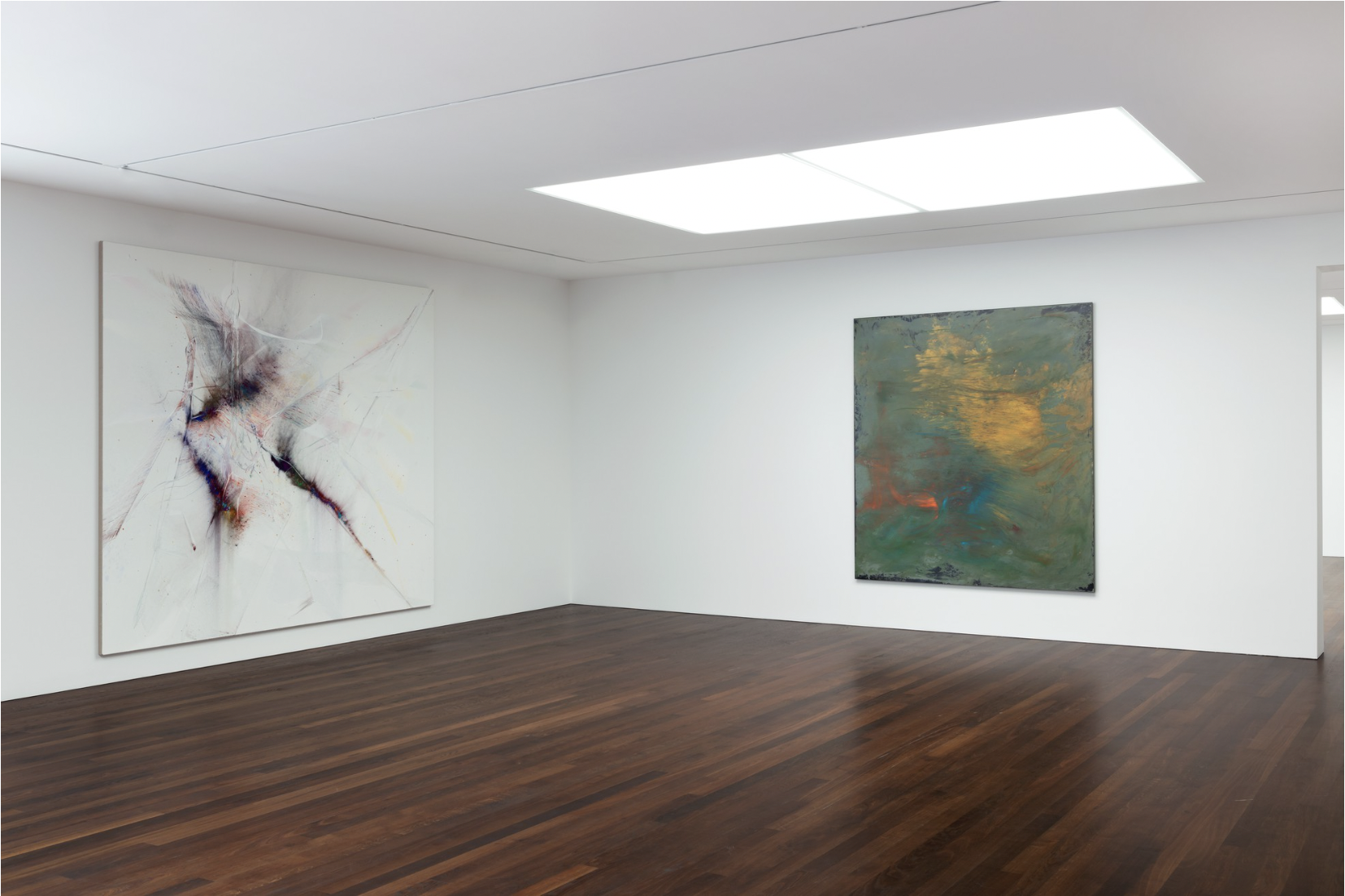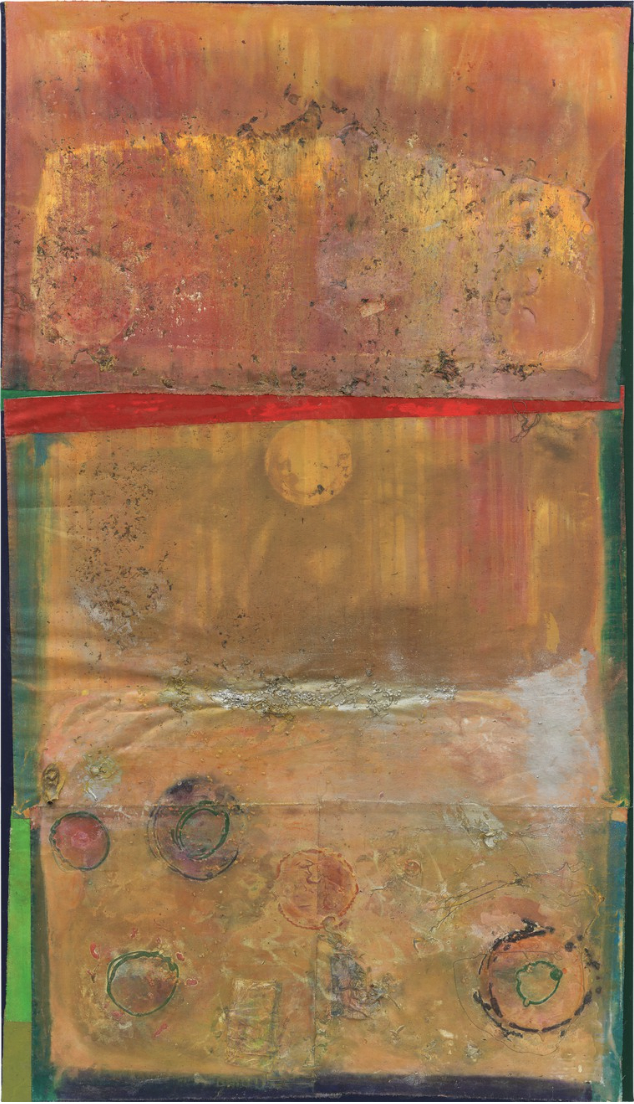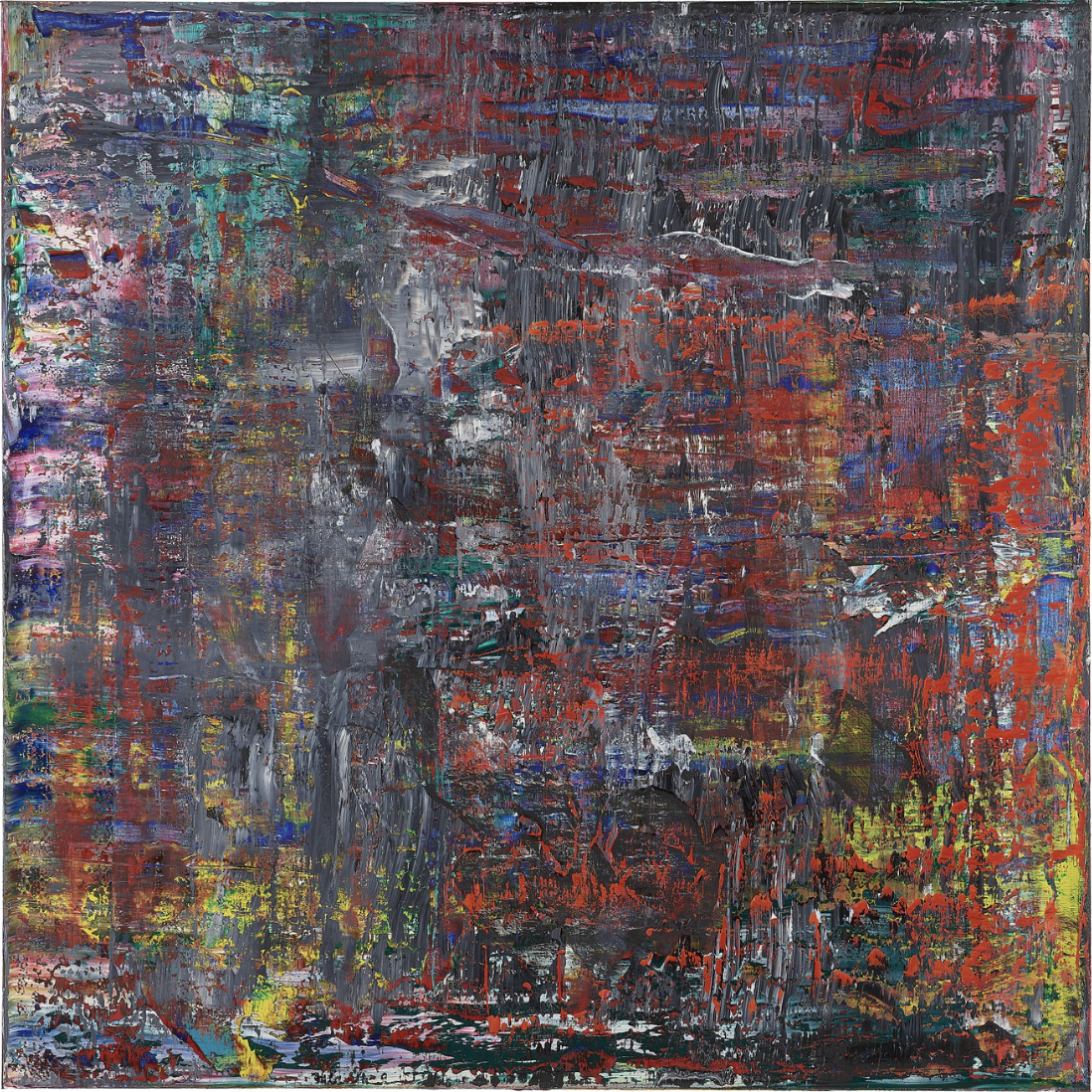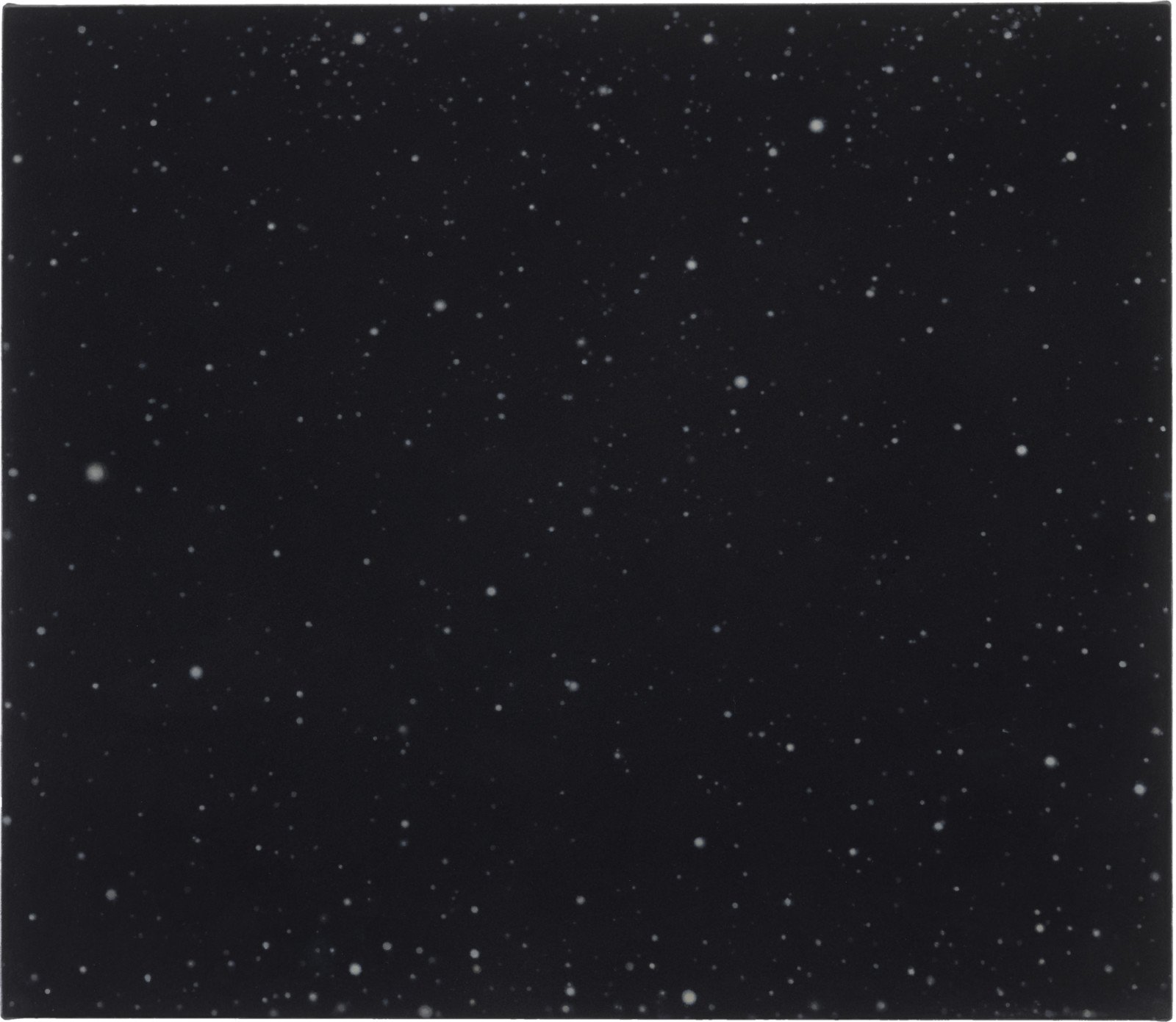To Bend The Ear Of the Outer World: Conversations on contemporary abstract painting @ Gagosian, Grosvenor Hill & Davies Street
In his 1940 article, Wyndham Lewis, the leader of the short-lived British Vorticist group, aggressively declared that “abstract art was no more”. [1] More than seventy years later, Gagosian’s latest London exhibition, To Bend The Ear of the Outer World: Conversations on contemporary abstract painting, proves the movement is very much alive and kicking.
Exhibition poster. Courtesy Gagosian.
However, simply creating a museum-quality exhibition uniting fine examples of abstract artworks produced from 2017 to 2023 would not be enough to prove the continued significance of this exciting art movement. This is not the Gagosian way. For the occasion, Gagosian invited renowned curator Gary Garrels to organise this major exhibition. With the carte blanche card at his disposal, Garrels spared no opportunity to be as creative and daring as he desired.
The exhibition brings together forty living artists aged between thirty and ninety, who, in collaboration with Garrels, each selected a single painting to be included, who either work or were born in America, the UK or Germany. And, for the first time in the gallery’s history, the exhibition is situated in both its London locations at Grosvenor Hill and Davies Street.
Due to the challenging nature of abstraction with its lack of a distinct subject, it is often tempting to overanalyse the curatorial decisions or to read too much into individual works of art. With an evocative title taken from verses by Frank O’Hara and its connection to Garrels’ previous curatorial success in Oranges and Sardines held at the Hammer Museum, Los Angeles, in 2008-9, this urge is even stronger. But this is precisely what Garrels asks us not to do.
Whilst each artist’s individual abstract style is strongly encouraged, equal emphasis is placed on what Garrels refers to as ‘affinities’ - spontaneous conversations between individual artists and their artworks. Although each room is organised around a specific decade or technique, these themes are not emphasised, nor do they act as the defining thesis around which one is to make their visual judgements. Indeed, there is no thesis. To Garrels, good abstraction does not have a resolution; it is something that one must return to often to contemplate its forms and colours for long periods of time. Consequently, the spectator is incentivised to create their own hypothesis.
Installation view at Gagosian, Davies Street. Left: Richard Hoblock. Right: Matt Connors. Photo credit Lucy Dawkins.
Of the nine affinities presented across the two locations, three especially stood out, and they’re all at Grosvenor Hill. This is not to say that the two affinities featured in the space on Davies Street are not visually exciting - because they are. The small back room, affectionately referred to as the ‘jewel box’, is certainly a miniature treasure and succeeds in its role as a parting gift to leaving visitors. But, compared to other successful exhibitions held there, such as Cristina Iglesias’ natural, earthy sculptures from last summer or Tyler Mitchell’s photography display in October, the final affinities are united by their explosive colour palettes above anything else. Although it successfully entices passers-by to visit the space, it is not as powerful an experience as those other rooms in Grosvenor Hill.
One of the most exciting and daring curatorial decisions was to feature David Hammons’ Untitled (2019) on its own in the gallery’s narrower corridor space. One might think that it would be easy to miss when on the quest to discover what lies beyond the gallery’s initial rooms. But, the work is so enormous in scale - so large that it also takes up some of the floor space - this would be impossible. Indeed, it is one of Hammonds’ last and largest tarp works created during the 1960s. Yes, you read that right. Tarp works. Tarpworks, if you will… If it were mixed in with, say, Suzanne Jackson’s sculpture (the only free-hanging work in the entire exhibition) Palimpsest Grit (2022-3) or Oscar Murillo’s manifestation (2020-1), it would likely be ignored as it is arguably one of the most ‘difficult’ works in the exhibition. Thus, the strangeness of this abstract, sculptural work is precisely what makes it deserving of its own space for contemplation.
Installation view at Gagosian, Grosvenor Hill. Suzanne Jackson, Palimpsest Grit, 2022-3. Acrylic, canvas, graphite, aluminium, raw silk, shredded mail, twine, string, wool, braided string, acrylic detritus, mesh, 266.7 x 157.5 x 6.3cm. Courtesy Gagosian.
According to Garrels, secrets are Hammons’ niche. And this artwork is full of them. First, the unusual materials - pieces of tattered transparent plastic, a draped black cloth, bits of old rope and string, and the painted canvas they cover. Why would he choose to cover the artwork beneath? Surely, this is a mistake? But, there are never mistakes in Hammons’ work. Rather, the holds in the tarp strategically tease the spectator with glimpses of striking strokes of vibrant green, pink and purple paint beneath. In doing so, Hammons explores the duality of the visible and invisible.
Oscar Murillo manifestation, 2020-22. Oil ,oil stick, graphite, and spray paint on canvas and linen, 280 x 269.9cm. Courtesy Gagosian.
Jadé Fadojutimi, And willingly imprinting the memory of my mistakes, 2023. Acrylic, oil, oil pastel, and oil bar on canvas, 300 x 500cm. Courtesy Gagosian.
Continuing on the theme of deeper contemplation, the conversations between Murillo’s painting and those by Gagosian darling Jadé Fadojutimi, Ryan Sullivan and Thilo Heinzmann are particularly captivating. Here, Garrels hands the stage over to the young contemporary artists of today who are currently exploring the potential of abstract painting. All four paintings were made specifically for the occasion of the Gagosian exhibition - a testament to Garrels’ collaborative friendship with all the artists included in the exhibition - and are, thus, the epitome of ‘wet paint’.
All large in scale and wrought with emotional intensity, the works were designed with immersive intention in mind. The careful blend of thick reds and blacks from Murillo’s canvas are delicately picked up in the central splatters set against the pure white (white being potentially the most abstract colour in an artist’s paintbox) background of Heinzmann’s O.T (2022). On the other opposing walls, vibrant layers of greens, browns and blues found in Fadojutimi’s And willingly imprinting the memory of my mistakes (2023) have been muddied in Sullivan’s resin, fibreglass and epoxy picture. By creating these opposed colouristic relationships, the space is utterly entrancing. Then to have the preceding room be a complete contrast - meditative and quiet with blocks of colour rather than dynamic and gestural - only heightens the effect produced by these young, raucous artists.
Installation view at Gagosian, Grosvenor Hill. Gerhard Richter (L), Stanley Whitney (C) and Frank Bowling (R). Courtesy Gagosian.
Yet, one of the exhibition’s triumphs is the union of some of the greatest names from twentieth-century art history in the second room - Brice Marden, Gerhard Richter Frank Bowling and Vija Celmins. United by their innovative activity during the 1960s, these artists are the oldest in the entire exhibition, setting the tone for abstraction in later decades.
Marden’s Hockney-esque picture was plucked from his solo show last year at Gagosian’s Chelsea, New York space, exploring the artist’s careful observations in nature and light around his studio in Tivoli. A favourite detail is the pale green ‘predella panel’ in the picture’s lower register.
Celmins’ Night Sky #22 (2015-18) is a hidden gem tucked in the corner of the room. Without the lively colour palette of its contemporaries in the space and its much more diminutive scale, it is easy to miss but most definitely ought not to be ignored. As its title suggests, the canvas is one of a series of paintings dating back to the 1960s depicting the night sky. Although it might seem that the picture is out of place in an exhibition about abstraction, it is no more subjective than any other work included. Indeed, the very nature of the galaxies, outer space and what lies beyond is one of the most abstract concepts that continues to faze humanity today.
Undoubtedly, Richter and Bowling are two of the most recognisable names in the exhibition. To have not only a work from Richter’s final active painting year (2017) but an outstanding work from that period is reason enough to visit the exhibition. To be accompanied by a never-before-seen sculptural canvas, Passtheball (2022), created by Bowling specifically for his participation, only adds to the excitement.
Garrels wanted the show to be one that visitors returned to time and time again throughout the summer months. He wanted spectators to leave with questions that could only be answered by a second or third visit. Whilst the rooms are broadly themed by time period or style - the 1960s, the 1970s, human abstraction, machine abstraction, mediation, vibrancy, and so on - together, they tell the story of international abstraction up until this point. But more than that, the works serve as a precursor for the boundless limits of this undying style.
One anecdote that stuck with this reviewer, and forms the basis of my thesis, is from the 1990s when Garrels attended a conversation with the American painter Robert Rymans (who sadly passed and thus could not be included in this stylistic retrospective). One journalist asked Rymans whether abstraction had died. In response, Rymans noted that the movement was only in its infancy. And how correct he would turn out to be. Even after my first visit to Gagosian’s exhibition, it is clear that Lewis was wrong. Abstraction continues to be more, and shows no signs of slowing down.
Gerhard Richter, Abstraktes Bild, 2017. Gagosian, Grosvenor Hill. Photo credit Justin TALLIS / AFP.
To Bend The Ear Of the Outer World: Conversations on contemporary abstract painting is on view at Gagosian Grosvenor Hill and Davies Street until August 25, 2023.
Ilaria Bevan
Editor in Chief, MADE IN BED







